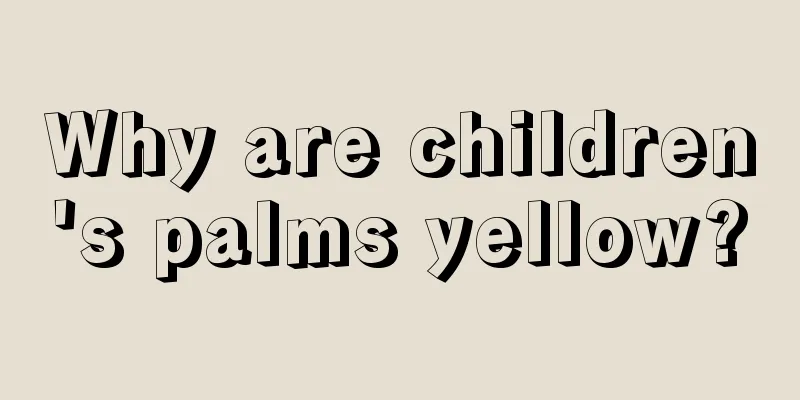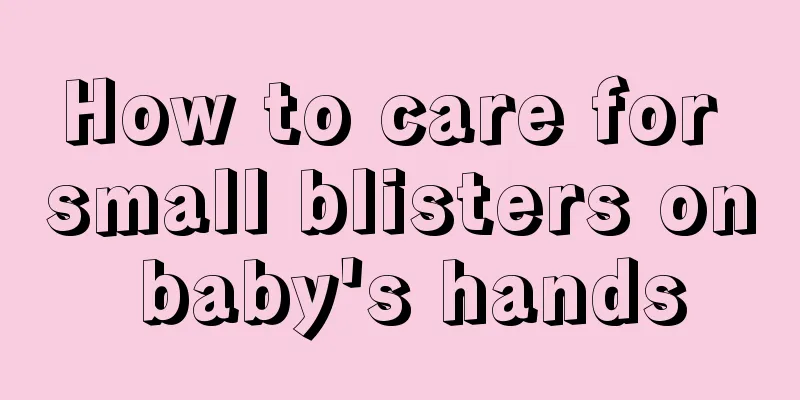3-year-old baby has white spots on his face

|
A baby's face is generally smooth and fair. However, if there are white spots on the baby's face, parents need to pay special attention to the possibility that the baby has a certain skin disease, such as vitiligo or pityriasis alba. Some parents are afraid that it is vitiligo because vitiligo is more difficult to treat. However, no matter which disease it is, you must go to the hospital first to confirm it, seek the help of a doctor, and then let the doctor customize an accurate treatment plan. The white spots on the child's face may be mainly due to pityriasis alba, also known as simple pityriasis, or commonly known as rice soup ringworm, worm spots, etc. It is a chronic skin disease characterized by superficial dry scaly hypopigmentation on the face. The specific cause of this disease is unclear, and it may be related to sunlight exposure, malnutrition, B vitamin deficiency, roundworms in the body, etc. This disease does not affect physical health and generally does not require treatment. Its course is long. It can disappear on its own after a few months without treatment, and some may last for many years. The treatment is usually slow to take effect. Modern medicine generally uses drugs to keep the skin gentle and moisturized. 5% sulfur cream can be used externally to kill insects. Vitamin B2, vitamin B complex, etc. are given orally. At the same time, your child may also suffer from vitiligo. The skin of the affected area of vitiligo is porcelain white, and the hair of the damaged area also turns white. It can be observed for identification. In addition, the white spots of vitiligo are sensitive to sunlight and turn red after a little exposure. It is recommended to observe carefully whether the surface of the white spots is smooth and free of dandruff. The white spots are light white or milky white. If the boundaries are blurred or spread towards the normal skin, it may be vitiligo. The specific situation needs to be confirmed after seeing the white spots. Vitiligo is a difficult disease to treat. Its biggest feature is that it is easy to spread, especially affecting appearance and life. It is recommended that you stop taking the medication and go to a national regular professional scientific research institution for the treatment of vitiligo for testing and treatment in time to avoid delaying the disease and the best period for treatment. Opinion and suggestion: Vitiligo has a certain chance of being inherited, but the inheritance rate is relatively small, generally around 3%-5%. Pure genetic factors do not necessarily lead to vitiligo. Vitiligo is caused by a combination of internal and external factors under a genetic background. Vitiligo has a certain correlation with genetics, but genetic factors only account for a very small part of the causes of the disease. Generally, about 3%-5% of environmental factors (such as lifestyle, work environment, eating habits, mental state, air, water source, etc.) also play an important role. It is recommended that patients should have a clear examination and then symptomatic treatment to achieve the desired treatment effect. |
<<: The child's face turned pale, what's going on?
>>: What's wrong with the white marks on the child's face?
Recommend
What to do if your child has leg cramps
I believe everyone is familiar with symptoms such...
What should I do if my child keeps having a fever?
Autumn is approaching us step by step. At this ti...
Is steaming suitable for children?
Try not to take children to sweat steam. Even if ...
How to treat children’s indigestion and nausea?
Indigestion and nausea often occur in our daily l...
Treatment methods for children with yellow face and thin muscles
Babies should pay special attention to their dail...
What are the symptoms of cerebral palsy in children?
What every mother fears most during the delivery ...
What to do if your five-month-old baby has a cold and stuffy nose
It is common for newborn babies to have a cold an...
What's wrong with the blue veins between the baby's eyebrows?
Many old people say that if a child is born with ...
What is the treatment for pediatric dermatitis?
Many parents will encounter the phenomenon of der...
What is the standard of the children's height and weight comparison table?
After the baby is born, he will be cared for by h...
How to treat children's frequent constipation
Constipation is a common physical problem. Many p...
What are the reasons for children's partial eating?
If a child has a picky eating habit for a long ti...
What's wrong with a one and a half year old baby suddenly having a fever?
Nowadays, every child is the treasure of the fami...
What should I do if my baby has a hoarse throat?
Sometimes babies can easily develop hoarse throat...
What is the reason for increased texture on both lungs in children's chest X-rays?
Autumn and winter are the peak seasons for childr...









